Scandinavia has no shortage of loudspeaker designers. Both when it comes to separate loudspeaker drivers and finished loudspeakers in all price ranges, the Nordic countries are at the very top of the global ladder. However, none has been as original as the Swede Stig Carlsson, who for five decades shaped and provoked the audio world with his very different ideas and designs.
His speakers were like nothing else, but in particular the sound and the ideas behind them were different. While competitors proudly displayed test measurements taken in anechoic chambers, Carlsson had the heretical idea that speakers should sound good in an ordinary living room!
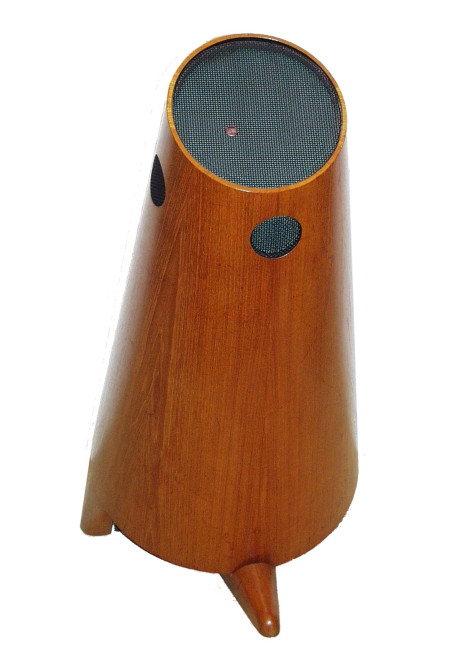
The Coal Scuttle
The course was set from the beginning. Already with his first loudspeaker model in 1953, Stig Carlsson showed that he was going in a direction that was very different from the rest of the industry. Elektronlund Lund Ortho Acoustical System 1001 is known as the “coal scuttle”, as the slanted, cannon-like teak cylinder is reminiscent of the coal scuttle that was an accessory to the stove in 1950s homes.
The design was wildly ambitious: a 10-inch woofer at the bottom of the cabinet acted as a subwoofer, a Philips 9710 full-range driver at the opposite end covered the midrange. And four tweeters, positioned on either side of the cabinet, spread the treble around the room according to the orthoacoustic theory that Stig Carlsson championed throughout his life. The loudspeakers were active and had built-in 2 x 12 watt tube amplifiers and electronic crossovers at the bottom of the cabinet.
Although technically it was not the best idea in the world to enclose a tube amplifier in the cabinet, it is believed that most of the 300 or so ” coal scuttles” that were manufactured still exist.
100,000 “matchboxes”
The most successful Carlsson loudspeakers were the OA-5s, which were produced in more than 100,000 units throughout the 1960s and 70s, making them some of the best-selling loudspeakers in Scandinavia. The OA-5 is a typical Carlsson design, with a full-range driver placed at the rear of the top end of speaker radiating straight up into the air, while four tweeters played diagonally in opposite directions.
Like the other Carlsson loudspeakers, the OA5 should be placed with its back to the rear wall. Seen with today’s eyes, they look odd to say the least, like overgrown matchboxes on edge. But when you put on music, the derisive comments die down and people drop their jaws. Instruments and voices emmanate clearly and presently in the room.
State-employed speaker manufacturer
Stig Carlsson was more of an acoustic genius than a financial one and went bankrupt with his speaker production several times. The first time was in 1969, when the state took over Sonab, as the factory was called, and ran it on an equal footing with commodity companies. This gave Carlsson more resources to research and develop its loudspeakers.
By 1978, however, it was all over and Sonab had to close. Complicated cabinets, which were expensive to manufacture, and many units (the top model OA2212 contained no less than 16 speaker units!) made the speakers relatively expensive. At the same time, sound ideals had shifted from omnidirectional to direct sound.
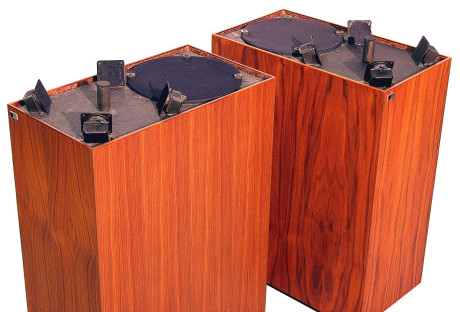
The 1980s
Stig Carlsson was far from a defeated man, however. He got a new production going at a factory in Skillingaryd, Sweden, this time under his own name. Throughout the 1980s, he produced a new range of loudspeakers here. All three – the OA-50, OA-51 and OA-52 – were low-profile two-way floor models with a pyramid shaped top.
Carlsson’s designs have impressed the trade press throughout the years. It was inspiring that someone dared to go so far against the establishment. And even more so when the result actually sounded good. But despite the praise, the sales figures remained small. In 1989, the factory in Skillingaryd had to close, and Carlsson loudspeakers were effectively finished.
Researched to the very end
In the last years of his life, Carlsson lived in the attic of his villa, while the rest – which had previously housed his cherished laboratory – had to be rented out to make ends meet as an old-age pensioner. He also had to give up renewing some of his international patents. Although no new models came from Stig Carlsson, he continued his experiments throughout the 1990s with the intention of refining his designs.
After years of struggling, Carlsson inherited a family fortune in 1996. What designs might have come out of it is anyone’s guess. For it all ended abruptly on 8 March 1997: after a fall on an icy Stockholm street, Stig Carlsson died in hospital, aged 71. But Carlsson fans still yearn for exotic designs from the master’s hand that never made it beyond the drawing board. Not least the mythical three-way model, “Trevägaren”.
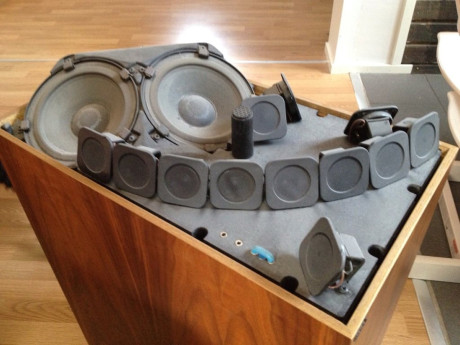
Cult following
And Stig Carlsson’s ideas live on. The Stig Carlsson Foundation preserves the legacy in the form of design drawings and information, and the website carlssonplanet.com offers fanatical enthusiasts a detailed look at the many designs and their history. Here you can also find guides and restoration tips as well as price estimates for the value of each loudspeaker in its original state, slightly restored and after a total make-over where all elements have been replaced. A nice set from the early 1970s can end up costing hundres or even thousands of Euros.
One of Stig Carlsson’s partners, Larsen Hifi, has been producing loudspeakers with the Carlsson logo since 2004. These are newly developed models, but based on the same theories Carlsson used throughout the 1980s and 90s.
Teenage engineers revive classic
Another Swedish company has taken up the legacy of Stig Carlsson. On 14 July 2014, design and technology company Teenage Engineering unveiled the OD-11 Cloud Speaker. Externally, they look very similar to the 48-year-old Sonab OD-11 – also called the Carlsson Cube – which was the factory’s smallest loudspeaker. But the interior of the cube-shaped cabinet has been brought up to today’s standards. In addition to new elements, the new model includes a 100-watt digital amplifier and AirPlay.
The teenage engineers have been working on the project for several years and have shown off nearly finished versions at both the IFA and CES trade shows. But the launch has been repeatedly delayed. Now, however, it has been done in style. The OD-11 is sold exclusively through the design shop at the prestigious Museum of Modern Art in New York. However, if you can’t make it to the Big Apple, the OD-11 is also available via the Teenage Engineering website.
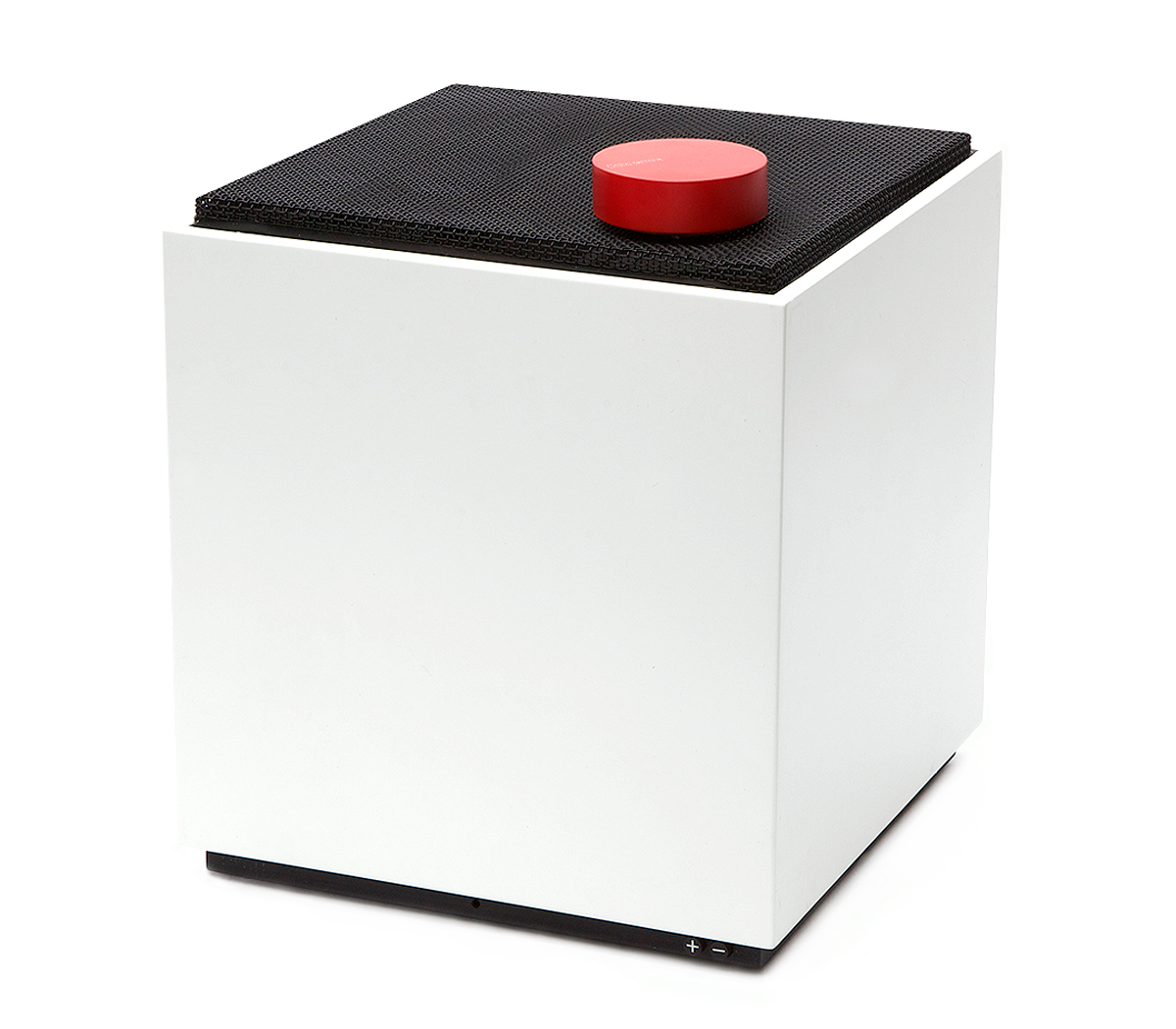
Change everything – keep the sound
If you buy a set of original Sonab speakers, be prepared to spend a lot of time and money refurbishing them. Most models are 40 or more years old, so refurbishment may be necessary. If you want the best, it is thus recommended to replace all the speaker drivers with newer types.
If you go that route, it’s a good idea to replace the capacitors in the crossovers, too. And if you want to go all out, you can replace the thin plywood cabinet with a more solid one, damped to the highest standards. You are now left with the paradox of having two sets of speakers: the original – which can be resold – and a brand new set with the original sound, but brought up to today’s technical standards! In the Carlsson loudspeakers, the sound depends more on the construction principle than on the components…
Orthoacoustics
Stig Carlsson used the term ortho acoustics to describe his theories on sound reproduction. Translated directly, it means something like “straight sound”, and the main idea is that sound should be reproduced as straight as possible – in a living room, that is, rather than in a anechoic testing chamber.
When you put speakers in a living room, their sound is greatly affected by their surroundings. Room resonances can emphasise some frequencies dramatically – while attenuating others accordingly. And reflections from the floor, ceiling and walls can affect the stereo image and impulse reproduction.
The traditional solution is to distance the speakers from the back and sides, and lift them off the floor, getting them as far away from reflective surfaces as possible. This, in turn, often causes disapproval from other members of the household and still doesn’t eliminate reflections from the ceiling.
Avoid short reflections
Carlsson’s designs go in the exact opposite direction. Reflections are inevitable, but you can control their distribution and when they arrive.
Carlsson found that reflections arriving 1-5 milliseconds after the direct signal are most disturbing. Earlier reflections will be perceived by the ear as being part of the original signal. And if the reflected sound arrives later than 10 milliseconds after the original, the ear can separate it from the original and abstract from it.
All Carlsson loudspeakers should be placed on the floor, right up against the back wall. The placement gives a boost in the bass range, but this is factored into the frequency response of the speakers. And because of the short distance to the wall, reflections do not interfere. It makes the wall “disappear” acoustically, and you get the feeling of listening through the wall. The distance to other reflective surfaces, on the other hand, becomes so big that the sound only emerges after the 10 milliseconds when the ear becomes able to distinguish it from the direct sound.
As for the treble, early Carlsson speakers were omnidirectional, sending the high frequencies out in a horizontal fan, but avoiding spreading them towards the ceiling and floor. In the 1980s, however, he changed the idea and went with a single dome tweeter, but controlling the spread by means of damping “wings” on the side of the speakers.
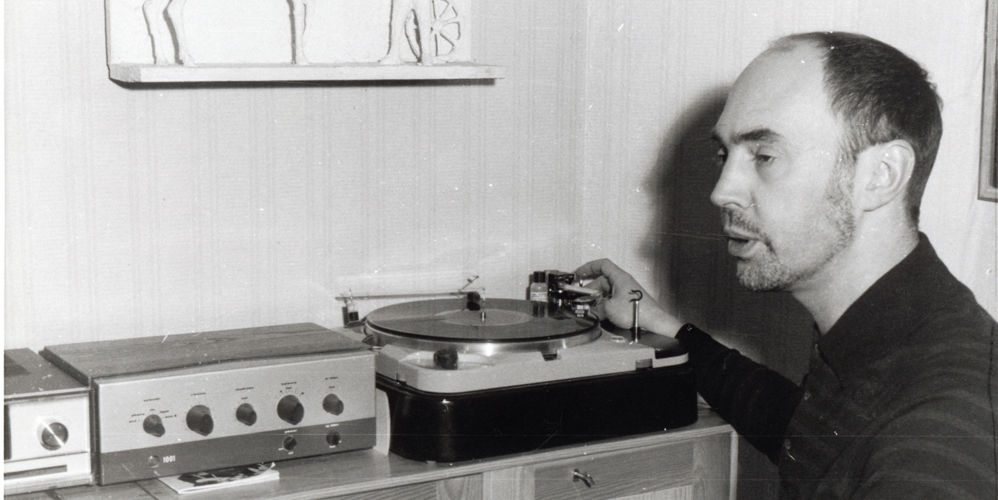

I was a Sonab retailer in the early 1970’s on wards and sold hundreds of their speaker V1 OA4 OA5 OA14 OA6 amps and turntable receivers headphones etc Andy Truman was our rep great guy I still have a pair of OA14 which are all original and unmarked and they are super. It’s a great shame Stig went from problem to problem if you want great speakers get apair they are still wonderful even in 2022.
I found Sinus B-4 speakers and they are very impressive. Are they a product of Stig Carlson?
Thank you
David
I don’t know the heritage of Sinus speakers, but being relatively classic closed box designs, judging from images onlinem, it is unlikely Carlsson had a hand on these. Stig Carlsson was anything but traditional.
Thanks for the background! I recently bought a pair of Sonab C10 speakers for $40 (including two stands). They sound amazing, especially in the low end, but can’t find anything about them except what’s written on the label on the back 50 w, 8 ohm, 45-20000 hz, Made in Sweden by JWS Trading). Any info you have about them would be much appreciated!